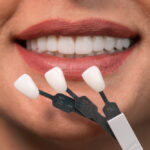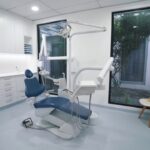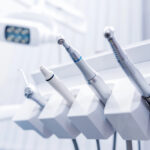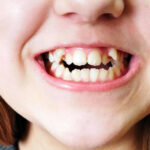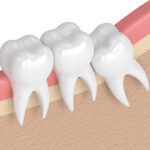As for orthodontic devices being used by dentists, the two most popular are the braces and retainers. Braces use an arch wire to push and pull misaligned teeth to certain directions to “straighten” out the contour and position of the teeth. The standard pull/push force (from the combined utility of both the wires and brackets) will basically move the teeth by a standard 1mm proximity each month, depending on both the orthodontist’s preference and the patient’s tolerance to pain. People with newly installed braces are expected to exhibit moderate to severe pain and numbness in the first few weeks of having their first braces installed. This is caused by the gradual, coercive force that impels the teeth to move from their original position by unnatural means.
There are different types of braces that will suit almost any malocclusion, each with a different push/pull force and aesthetic appearance. These are:
The Usual Metal Braces: considered as the most reliable and “strongest” type of braces with regards to “push/pull” effect, these are the types of braces that most dentists recommend. Modern braces have smaller brackets and a slightly engaging appearance, as compared to the older models that have brackets that cover the entire tooth. Recent advancements in technology have made these appliances cheaper for the masses, making them a popular choice on both teenagers and adults who do not want to spend additional money on Invisalign braces.
Ceramic Braces: ceramic braces, in contrast to metal braces, use purely composite material without any hint of metallic ingredients. These types of braces are more expensive and have a lesser “push/pull” force, as compared to metal braces. One clear advantage though, is that they look aesthetically pleasing (sometimes even unnoticeable), as they can be tinted to mimic the teeth.
Invisalign Braces: these types of braces are recommended to people who have very minimal malocclusions. These types of braces are made out of plastic, so they don’t stain and are also unnoticeable like ceramic braces. However, the price of Invisalign braces is quite hefty on the pocket, and losing these means having to pay for replacements. There have been a lot of cases with people losing their Invisalign braces, due to the fact that these can be removed from the teeth, unlike metal and ceramic braces, that are latched on to the teeth. Invisalign braces are currently becoming the most preferred type of braces by dentists in both Europe and the United States because of the same “push/pull” power with metal braces and because they are easily detachable, so the patient’s eating habits are not compromised.
Article Source: http://EzineArticles.com/4511320


